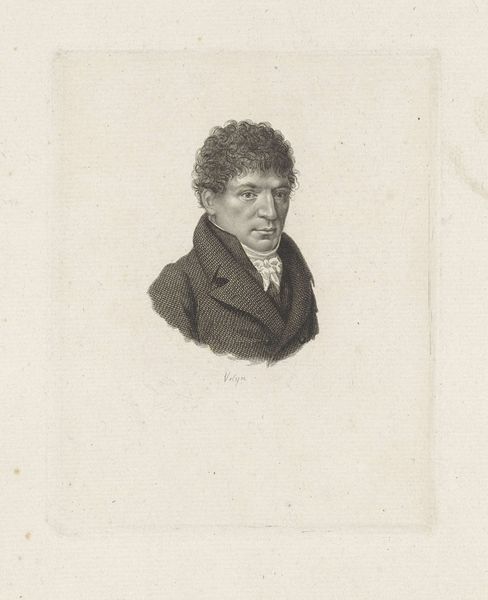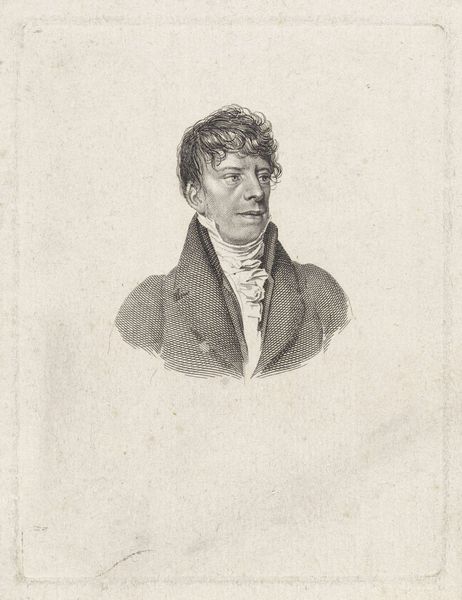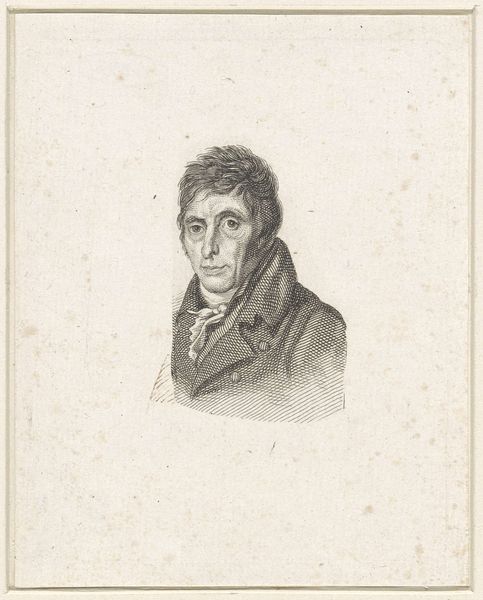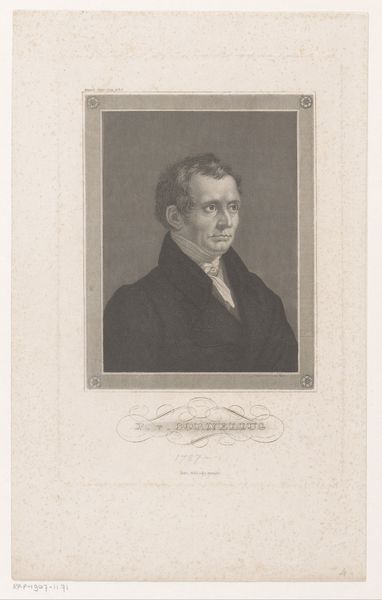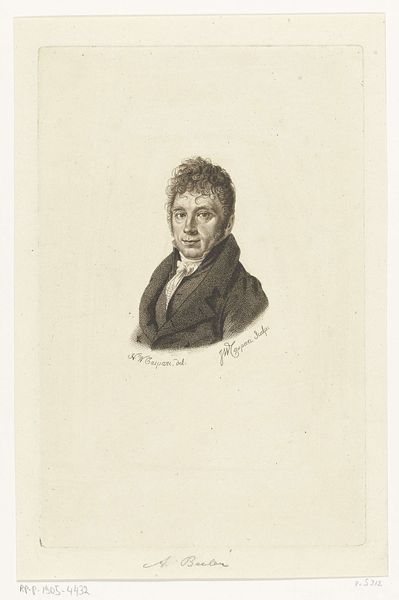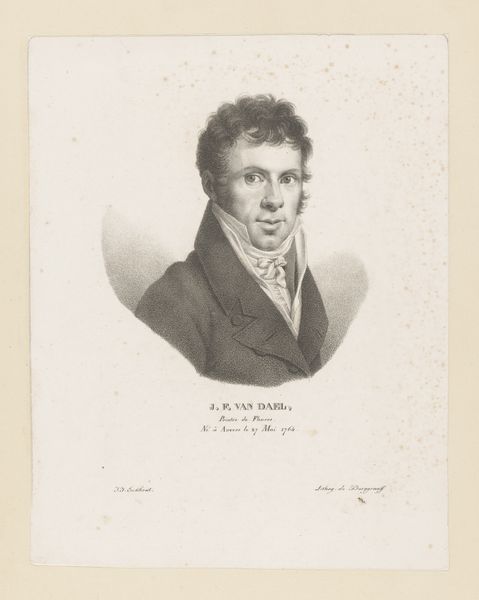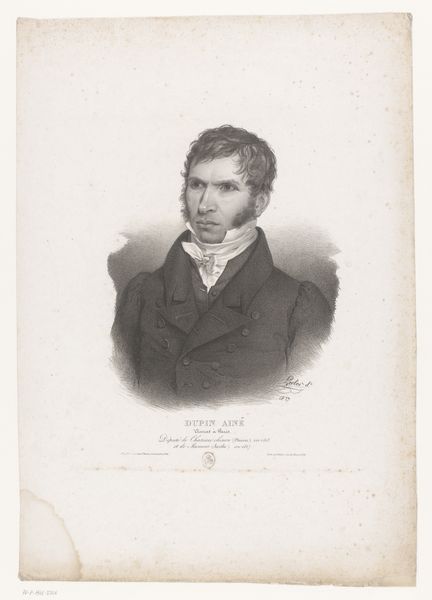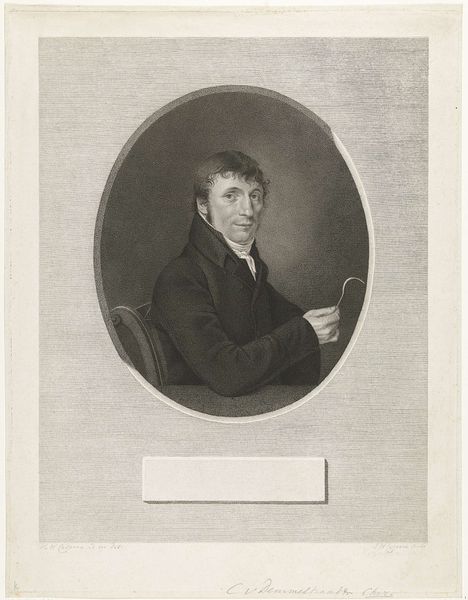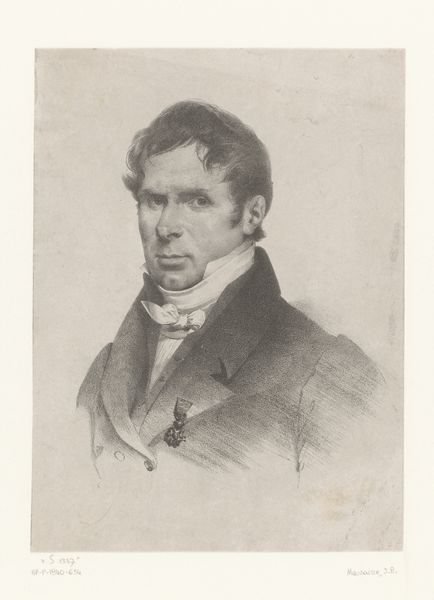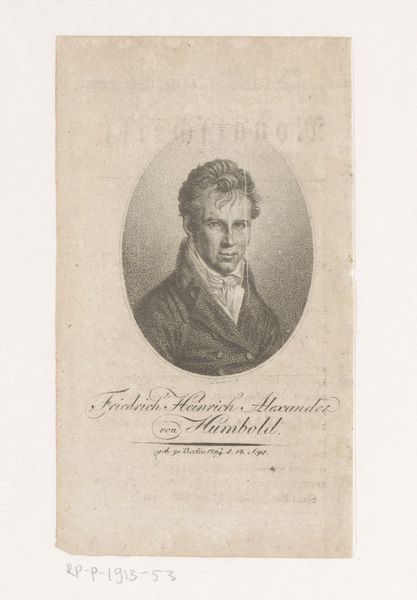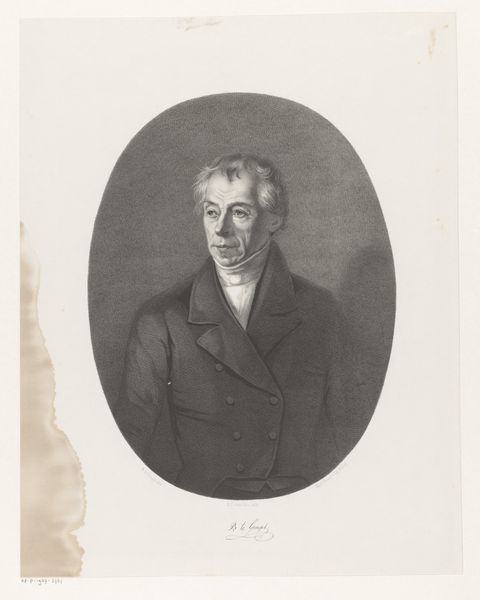
Portret van schrijver en kunstenaar Alessandro da Morrona before 1812
0:00
0:00
giacomoaliprandi
Rijksmuseum
engraving
#
aged paper
#
toned paper
#
old engraving style
#
personal sketchbook
#
pencil drawing
#
line
#
history-painting
#
academic-art
#
engraving
#
realism
Dimensions: height 165 mm, width 118 mm
Copyright: Rijks Museum: Open Domain
Curator: This is a print titled "Portret van schrijver en kunstenaar Alessandro da Morrona," made before 1812. The work is currently held in the collection of the Rijksmuseum. Editor: It's austere. The gray tones and the precise linework give it a severe, almost clinical quality, yet the detail is impressive. Curator: Let's look at it closer. Note how the figure is presented in a medallion format, a stylistic choice harking back to classical portraiture. We see Da Morrona set above a collection of symbolic implements. Editor: Absolutely. And there's a strong compositional balance created by the horizontal lines of the writing desk and the circular portrait above. It's a deliberate arrangement designed to frame the subject and highlight his creative attributes. Is this line style associated with any specific artistic practice? Curator: Indeed, this engraving embodies the principles of academic art with its devotion to realism and clean, precise lines. The aged paper enhances that historical feeling, adding a layer of visual texture and hinting at the passage of time. Editor: I’m wondering about its social role at the time. Portraits such as this one offered a specific declaration of one's social position and cultivated a carefully structured public identity, but there are some less-than-flattering details shown that provide this artwork an uncanny look. Curator: Portraits such as this circulated as symbols within intellectual networks, strengthening alliances and demonstrating prestige. Perhaps, the print aimed to solidify Da Morrona's legacy as both a man of letters and a practitioner of the arts. Editor: Despite its somewhat static quality, there’s something rather striking in how Aliprandi captured this creator in an environment that emphasizes literacy, intellect, and self-cultivation, all hallmarks of enlightenment values and its public intellectuals. Curator: That is a great point. Through visual semiotics, we decode the social status conveyed by a well-known writer. Editor: Thinking about the life of images, from the studio, to networks, to a public collection and into a modern audience's digital purview makes you appreciate its significance. Curator: Indeed, a fascinating glimpse into the public intellectual world, viewed now through different lenses.
Comments
No comments
Be the first to comment and join the conversation on the ultimate creative platform.
